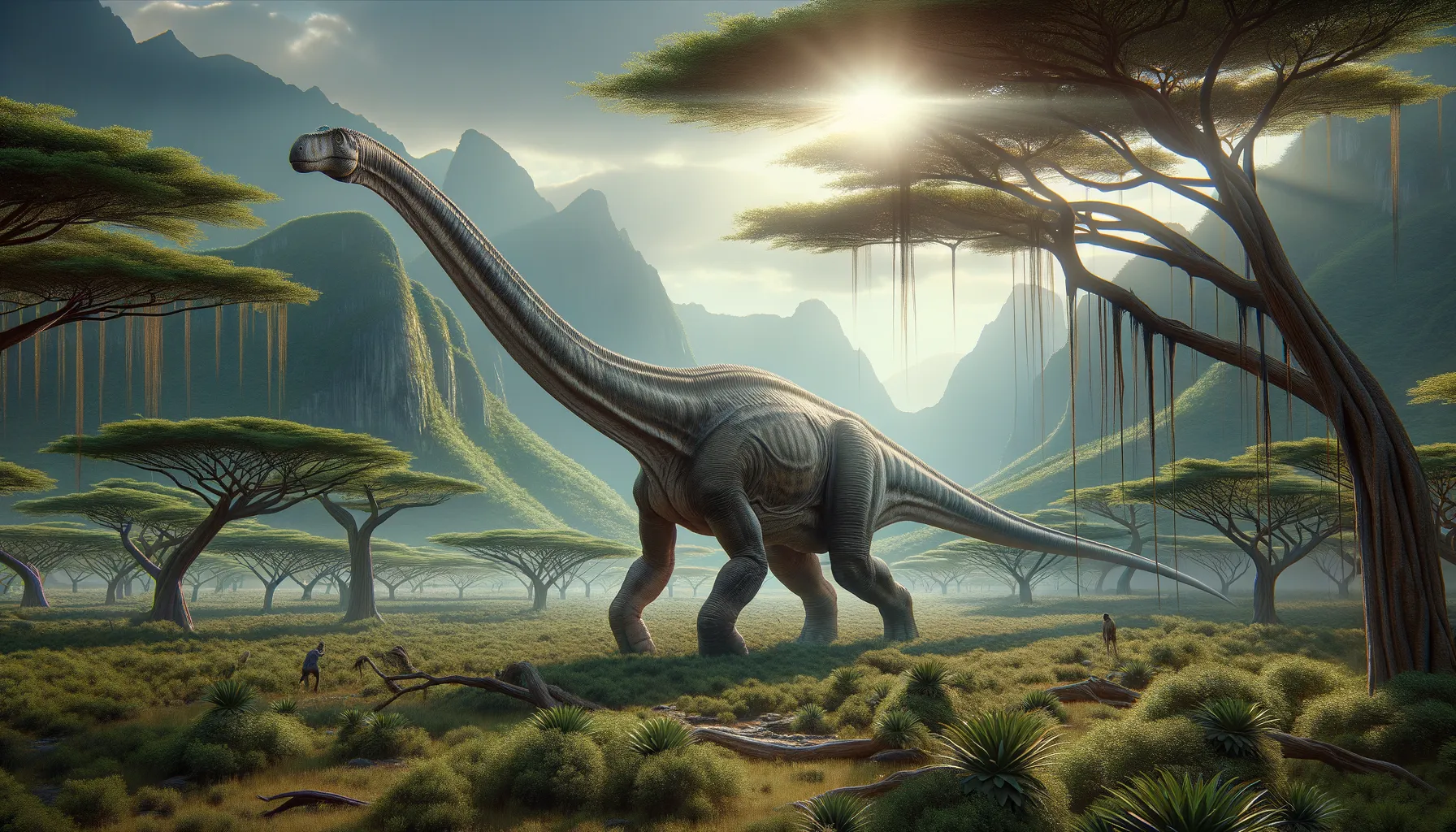
Klamelisaurus
Giant of the Jurassic plains revealed.
Period
Jurassic
Length
Up to 20 meters long.
Height
Around 5 meters at the shoulder.
Weight
Approximately 15,000 kilograms.
Klamelisaurus was a long-necked dinosaur that roamed the Earth during the Jurassic period. It was part of the sauropod family, recognized for its enormous size and lengthy neck. This gentle giant likely spent its days grazing on plant material and moving slowly through its habitat. Its fossils provide valuable insight into the diverse dinosaur fauna of ancient China.
Diet
Klamelisaurus was an herbivore, feeding primarily on the abundant plant life of its era. Its long neck allowed it to reach vegetation that was otherwise inaccessible to shorter creatures.
Hunting
Being a herbivore, Klamelisaurus did not engage in hunting behavior. Instead, it spent much of its time foraging for plant material in its environment.
Environmental challenges
Its large size required vast amounts of plant matter to sustain its energy needs. This could pose a challenge during times of scarcity, especially if its traditional feeding grounds were affected by environmental changes. Predators, though not able to typically take on full-grown individuals, could be a threat to the young or sick.
Speed
Likely slow-moving due to large size.
Lifespan
Could reach several decades.
First discovery
Found in Xinjiang, China in the 1990s.
Fun Facts
- Klamelisaurus is a lesser-known dinosaur from the Middle Jurassic period, around 160 million years ago.
- It was discovered in the Shishugou Formation of China, an area rich in dinosaur fossils.
- The name 'Klamelisaurus' means 'Klameli lizard', named after the region near where it was found.
- Klamelisaurus was a sauropod, a group of dinosaurs known for their long necks and tails.
- Unlike some of its massive relatives, Klamelisaurus was relatively modest in size, likely weighing similar to a modern elephant.
- Its fossils were first described in the 1990s, contributing valuable insights into sauropod evolution during the Middle Jurassic.
- Although not as famous as some other dinosaurs, Klamelisaurus helps scientists understand the diversity of sauropods from its era.
Growth and Development
Klamelisaurus, like other sauropods, likely experienced rapid growth in its early years, reaching nearly full size within its first few decades. This accelerated growth may have been an adaptation to reduce vulnerability to predators.
Habitat
It inhabited areas thought to be lush and verdant, with plenty of vegetables to support large herbivores. Its living area likely consisted of plains interspersed with patches of forests, providing plenty of foliage to reach and consume.
Interaction with other species
Klamelisaurus likely coexisted with a variety of other dinosaur species, both plant-eating and carnivorous. Its sheer size would have deterred most predators, but it possibly shared its habitat and feeding grounds with similar large sauropods.
Natural lifespan
Klamelisaurus had a natural lifespan of several decades.
Reproduction
As with most sauropods, Klamelisaurus likely laid eggs in clutches, leaving them to hatch in the safe confines of a buried nest. Hatchlings would be independent soon after birth, growing rapidly to join the adults in their foraging behavior.
Social behaviour
Klamelisaurus may have been a social creature, living in groups or herds for protection against predators. These social groups could have aided in the rearing and protection of young dinosaurs.
Fossil locations
Fossils of Klamelisaurus have been discovered in the Shishugou Formation in Xinjiang, China. These discoveries have provided significant insights into sauropod diversity and biogeography during the Jurassic period.
